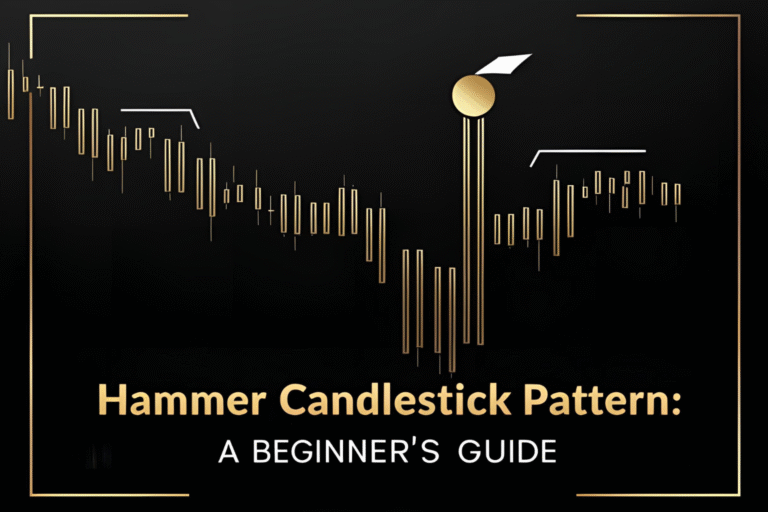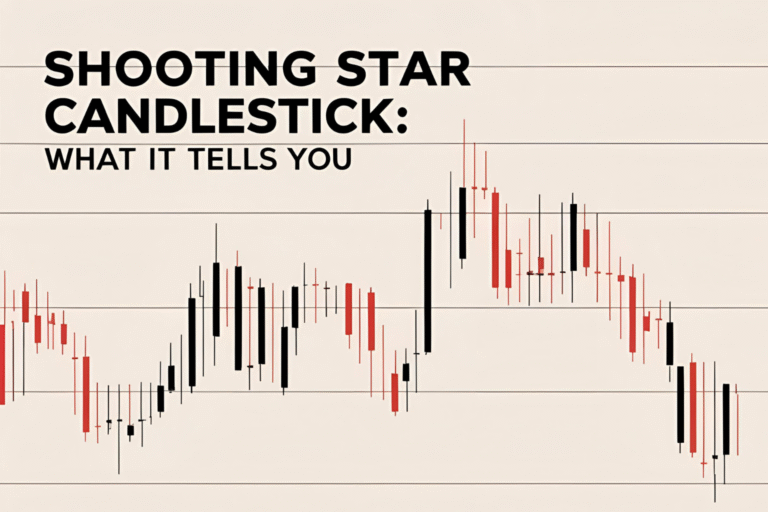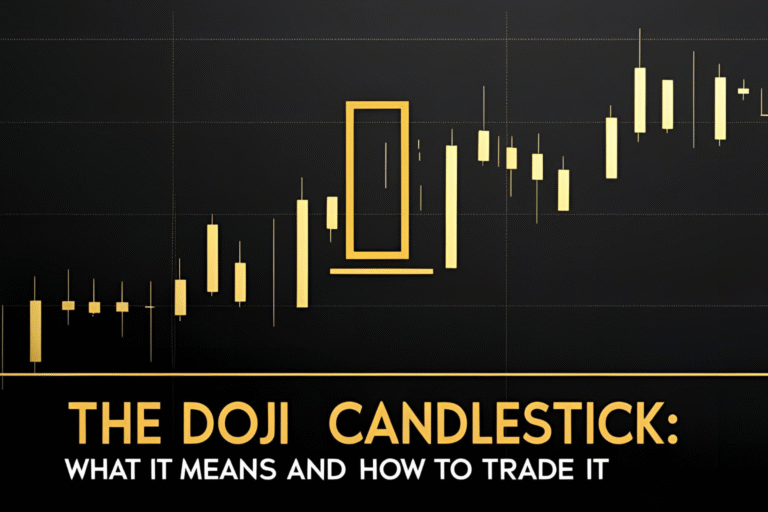Hanging Man Candlestick: What It Tells You
Hanging Man Candlestick: What It Tells You
The Hanging Man candlestick pattern is a bearish reversal signal that appears after a price uptrend. It looks similar to the bullish hammer pattern—but its meaning is very different. For beginners, recognizing the Hanging Man at the right time can help avoid late entries and spot trend reversals early.
In this guide, you’ll learn what the Hanging Man tells you, how to identify it, and how to trade it safely and effectively.
What Is the Hanging Man Candlestick?
The Hanging Man is a single-candle pattern that forms after an uptrend and signals potential weakness in buying momentum.
Key Characteristics:
- Small real body near the top of the candle
- Long lower wick (at least 2x the size of the body)
- Little to no upper wick
- Appears after a price rally
This structure reflects buying exhaustion, even though the candle may still close bullish.
What the Hanging Man Tells You
The pattern shows that:
- Sellers pushed the price down during the session
- Buyers recovered to close near the open
- Despite the recovery, the presence of strong selling pressure warns of a potential reversal
It’s a psychological warning that the bulls may be losing strength and the bears could be preparing to step in.
How to Identify a Hanging Man Pattern
To confirm a valid Hanging Man:
- The candle appears after a strong uptrend
- The real body is small, near the candle’s top
- The lower wick is long, typically twice the body size
- There is little or no upper wick
- Often occurs near resistance levels or overbought zones
Hanging Man vs Hammer: What’s the Difference?
These two candles look almost identical but form in different contexts:
| Pattern | Appears After | Signal Type |
|---|---|---|
| Hanging Man | Uptrend | Bearish reversal |
| Hammer | Downtrend | Bullish reversal |
Context is everything—the trend direction before the candle forms determines its meaning.
How to Trade the Hanging Man Pattern
Step-by-Step Guide:
- Confirm the Uptrend
- Ensure there’s a strong prior uptrend in price.
- Identify the Hanging Man
- Look for the long lower wick and small body near a resistance level.
- Wait for Confirmation
- The next candle should close bearish to confirm the reversal.
- Plan Your Trade
- Entry: Below the low of the Hanging Man
- Stop-loss: Above the high of the Hanging Man
- Take-profit: Next support zone or 1:2 risk-reward
Example: Hanging Man in Stock Trading
Imagine a tech stock rallies for several days and reaches a known resistance level. A Hanging Man forms on the daily chart—long lower wick, small real body at the top. The next day, a large red candle closes below the Hanging Man’s low.
This is a classic bearish confirmation, suggesting the uptrend may be over.
Common Mistakes to Avoid
- Confusing it with a Hammer – always check the trend direction
- Trading without confirmation – wait for a bearish candle after the pattern
- Ignoring resistance zones – the Hanging Man is more effective when near key price levels
FAQs
What does the Hanging Man candlestick indicate?
It signals potential weakness in an uptrend and a possible bearish reversal.
Is the Hanging Man reliable?
It’s reliable when confirmed by a bearish candle and found near resistance or overbought levels.
Can I use the Hanging Man in crypto and forex trading?
Yes. It works across stocks, forex, and crypto—especially on the 4-hour and daily charts.
How can I confirm the Hanging Man signal?
Look for a bearish candle after it forms, check volume, and confirm with RSI or MACD.
What’s the best timeframe to spot Hanging Man patterns?
The daily and 4-hour timeframes are best for clear and meaningful signals.




